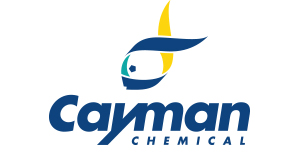Ganglioside GM1 Monoclonal Antibody (Clone DG2)
Ganglioside GM1 Monoclonal Antibody (Clone DG2)
SKU
CAY38290
Packaging Unit
100 µg
Manufacturer
Cayman Chemical
Availability:
loading...
Price is loading...
Formulation: 100 µg of protein A-purified monoclonal antibody
Immunogen: Ganglioside GM1 liposomes
Clone Designation: DG2
Shelf life (days): 1095
Notes: Ganglioside GM1 is a monosialylated ganglioside and the prototypic ganglioside for those containing one sialic acid residue.{31218,52660} It is found in a large variety of cells, including immune cells and neurons, and is enriched in lipid rafts in the cell membrane.{53951} It associates with growth factor receptors, including TrkA, TrkB, and the GDNF receptor complex containing Ret and GFRα, and is required for TrkA expression on the cell surface. Ganglioside GM1 interacts with other proteins to increase calcium influx, affecting various calcium-dependent processes, including inducing neuronal outgrowth during differentiation. Ganglioside GM1 acts as a receptor for cholera toxin, which binds to its oligosaccharide group, facilitating toxin cell entry into epithelial cells of the jejunum.{53952,53953} Similarly, it is bound by the heat-labile enterotoxin from E. coli in the pathogenesis of traveler's diarrhea.{53954} Ganglioside GM1 sensitizes inactivated T cells to TNF-α-induced apoptosis and induces apoptosis of activated T cells even in the absence of TNF-α.{52850} Ganglioside GM1 is found at higher levels on T cells isolated from patients with renal cell carcinoma (RCC) compared with T cells from patients without cancer. Levels of ganglioside GM1 are decreased in the substantia nigra pars compacta in postmortem brain tissues from patients with Parkinson's disease.{53951} Ganglioside GM1 gangliosidosis, characterized by a deficiency in ganglioside GM1-β-galactosidase, the enzyme that degrades ganglioside GM1, leads to accumulation of the gangliosides GM1 and GA1 in neurons and can be fatal in infants.{31218} Cayman's Ganglioside GM1 Monoclonal Antibody (Clone DG2) can be used for dot blot, ELISA, immunofluorescence (IF), and thin layer chromatography (TLC) applications.
Immunogen: Ganglioside GM1 liposomes
Clone Designation: DG2
Shelf life (days): 1095
Notes: Ganglioside GM1 is a monosialylated ganglioside and the prototypic ganglioside for those containing one sialic acid residue.{31218,52660} It is found in a large variety of cells, including immune cells and neurons, and is enriched in lipid rafts in the cell membrane.{53951} It associates with growth factor receptors, including TrkA, TrkB, and the GDNF receptor complex containing Ret and GFRα, and is required for TrkA expression on the cell surface. Ganglioside GM1 interacts with other proteins to increase calcium influx, affecting various calcium-dependent processes, including inducing neuronal outgrowth during differentiation. Ganglioside GM1 acts as a receptor for cholera toxin, which binds to its oligosaccharide group, facilitating toxin cell entry into epithelial cells of the jejunum.{53952,53953} Similarly, it is bound by the heat-labile enterotoxin from E. coli in the pathogenesis of traveler's diarrhea.{53954} Ganglioside GM1 sensitizes inactivated T cells to TNF-α-induced apoptosis and induces apoptosis of activated T cells even in the absence of TNF-α.{52850} Ganglioside GM1 is found at higher levels on T cells isolated from patients with renal cell carcinoma (RCC) compared with T cells from patients without cancer. Levels of ganglioside GM1 are decreased in the substantia nigra pars compacta in postmortem brain tissues from patients with Parkinson's disease.{53951} Ganglioside GM1 gangliosidosis, characterized by a deficiency in ganglioside GM1-β-galactosidase, the enzyme that degrades ganglioside GM1, leads to accumulation of the gangliosides GM1 and GA1 in neurons and can be fatal in infants.{31218} Cayman's Ganglioside GM1 Monoclonal Antibody (Clone DG2) can be used for dot blot, ELISA, immunofluorescence (IF), and thin layer chromatography (TLC) applications.

 Deutsch
Deutsch










